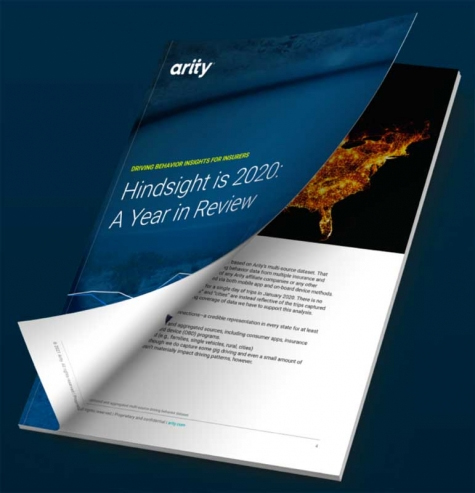Driving trend information in a report issued earlier this year by Arity, the data analytics company owned by Allstate, offered a suggestion that harder hits and total losses may have been up over the past year, even as claims counts, as reported by CCC Information Services, were down 21% for 2020.
Arity reviewed data on miles driven from 24 million consumer apps, insurance mobile telematics apps and onboard devices to analyze where, when and how Americans drove during the pandemic, comparing it to a model that, based on 2019 data, predicted what mileage would have been without a pandemic.
It shows over the course of the year, miles driven rebounded to very close to “normal” by the end of 2020.
But who is on the road has changed. Arity says the one-fourth of drivers who increased their driving at the beginning of the pandemic are still driving about 34% more miles today, while the three-quarters of drivers who reduced their driving last April are still driving between 12% and 29% less now.
Increases in vehicle speeds, allowed by empty roads in March and April 2020, also haven’t returned to pre-pandemic levels. Afternoon rush-hour speeds remain 10% higher for the year, and the prevalence of driving faster than 80 mph also increased about 15% in 2020.
That would seem to make harder hits and more total losses likely. Mobile apps that provide crash detection data analyzed by Arity showed the percentage of collisions involving a vehicle traveling at more than 70 mph increased about 50% during the pandemic.
More recent data released by CCC confirms harder hits and total losses have risen during the pandemic. Nearly 42% of DRP repairs were above $3,000 in 2020, according to CCC data, up from just over 40% in 2019.
More than one in five (20.5%) appraised vehicles were declared total losses last year, more than a full percentage point higher than the preceding year---and the seventh straight year of increased total losses, rising from just 14% in 2013.
Average total cost of repairs reached $3,421 last year, up 5.4% from 2019.
Average body labor rates rose just 1.6% last year, according to CCC data, but there was an uptick in the average number of labor hours per claim---24, versus 23.6 or fewer in each of the previous dozen years---and the average number of parts per claim jumped to 11.1, up from 10.5 in 2019. It was just eight per claim in 2011, when the trend of yearly increase in parts count began.
Two other notable stats released by CCC: Photo-based estimating accounted for 21% of initial appraisals in 2020, a not-surprising increase of nearly 50%, and average cycle time, based on repairs-started to repairs-completed, so excluding time before or after actual repairs, rose by a half-day over the past three years, to 8.5 days.










John Yoswick